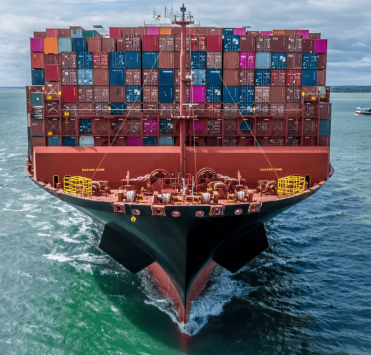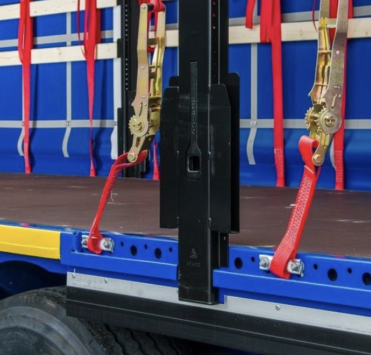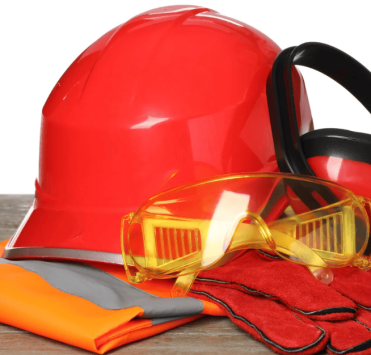Equipment transport regulations: transport guidelines and advice

Transportation of industrial equipment is popular not only in Ukraine but also abroad. The safety of the cargo, which sometimes costs millions of UAH, depends on the correct transportation. When transporting expensive goods, it is important to take into account all aspects of the preparation and the transportation process itself. When transporting machine tools, industrial plants, power equipment and other construction equipment, a logistics company needs to take care of road safety, as the driver is responsible for the cargo. Let's look at the main safety aspects and key stages of equipment transport that may be useful.
1. Selection of a vehicle
Machine tools, transformers, presses and medical equipment weighing up to 10-20 tonnes can be transported in containers, standard tilt trucks or BDE mega-trailers. Depending on the weight and size of the equipment, special semi-trailers (low-bed trailers) are also used. This type of transport is used to transport heavy and oversized cargo.
.png)
2. Method of equipment packaging
One of the problems associated with transporting equipment is its instability. Metalworking machines, transformers and medical boxes achieve the required stability only after they are securely bolted to special concrete platforms.
Such equipment requires additional protection during transport. Fragile devices are placed in wooden boxes and covered with shock-absorbing pads. One of the easiest ways to protect the equipment is to crate it with wooden bars.
The crate can also provide stability for wheeled equipment such as forklifts. This is usually the responsibility of the manufacturer of the equipment, but when transporting dismantled equipment, the logistics company may be responsible for crating according to the terms of the contract. In any case, the driver should check the strength and reliability of the crate when accepting the load.
3. The process of loading the equipment
In many cases, the shipper is responsible for loading the equipment. However, the driver is required to be present during the loading process and to monitor its progress.
The choice of crane or forklift depends on the weight of the equipment. The load must be properly strapped and placed on the truck floor in the right place. If there is any doubt about the crane's lifting capacity, it must be replaced.

4. Securing the load
From the moment the equipment is loaded and the shipping documents are received, the truck driver is fully responsible for the equipment. The first step to ensure safe transportation is to properly secure the equipment in the truck.
Many drivers are used to using standard tie-down straps. However, two or four straps may not be enough to prevent the load from shifting around the bottom of the truck or tipping over. In addition, tie-down straps are not suitable for securing plastic-cased medical equipment and other fragile equipment.
Stacking wooden boxes with equipment on top of each other is not always reliable. Shifting the top drawer horizontally can cause sharp-edged damage to the bottom drawer and equipment. For expensive goods, experienced logistics companies develop special fixing schemes or strictly follow the recommendations of the equipment manufacturer.
The most effective schemes are those that use a combination of diagonal and vertical cables and straps attached to independent points. To prevent shifting on the truck floor, the equipment is placed on massive bars (longitudinal and transverse), supplemented by rubber cushioning pads.
For other types of equipment, the frame legs are isolated and anti-roll stops are installed. Tilt, shock and tilt sensors help to improve control over the condition of the load.
5. Transporting - route planning and driving considerations
When transporting fragile or heavy equipment (10-20 tonnes), it is important to take into account vibrations caused by poor road conditions. This is especially true in Ukraine due to the difficulties in route planning. For the transport of medical devices, CNC machines and telecommunications equipment with delicate electronics, it is necessary to route the equipment on the best quality roads to minimise the risk of damage.
Transporting expensive equipment requires a highly skilled driver and careful assessment of road conditions. Even with perfect packing and securing, experienced drivers avoid sharp manoeuvres and fast driving around sharp bends. During transport, the driver should regularly check the condition of the load, make su
6. Unloading the equipment
The driver of the truck is not responsible for unloading the equipment, but he is obliged to monitor the unloading process. The driver has the right to demand the replacement of the forklift or crane, slings or rigging cables if there is any doubt about their reliability. In practice, conflicts often arise due to damage to equipment during unloading.









